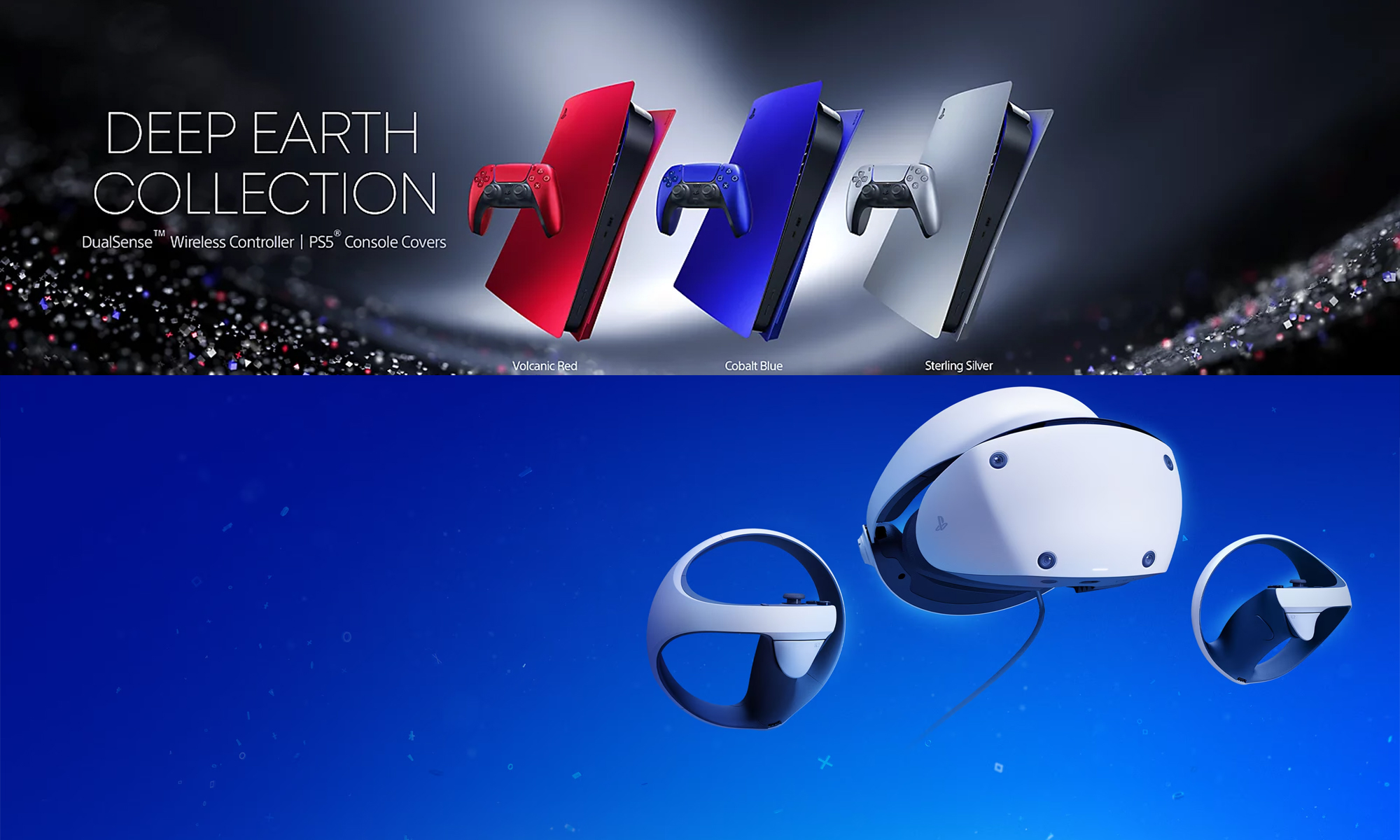Witchblade theme by doomsday001
Download: Witchblade.p3t
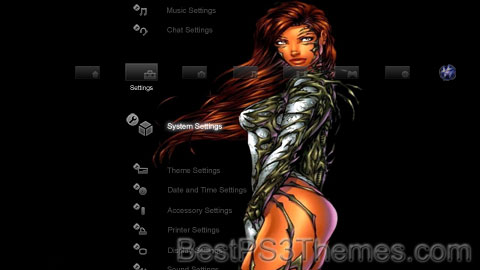
(8 backgrounds)
| Witchblade | |
|---|---|
 Front cover to Witchblade Vol. 1 ("Witch Hunt") TPB (Feb 2008) | |
| Publication information | |
| Publisher | Top Cow Productions (Image Comics) |
| Schedule | Monthly |
| Format | Ongoing series |
| Genre | |
| Publication date | November 1995 – October 2015 December 2017 – January 2020 |
| No. of issues | 203 |
| Main character(s) | Witchblade Sara Pezzini Alex Underwood |
| Creative team | |
| Created by | Marc Silvestri David Wohl Brian Haberlin Christina Z Michael Turner |
| Written by | David Wohl Marc Silvestri Brian Haberlin Christina Z Ron Marz |
| Artist(s) | Michael Turner Marc Silvestri Stjepan Šejić |
Witchblade is an American comic book series published by Top Cow Productions, an imprint of Image Comics, which ran from November 1995 to October 2015.[1] The series was created by Top Cow founder and owner Marc Silvestri, editor David Wohl, writers Brian Haberlin and Christina Z, and artist Michael Turner.
The Witchblade comic was adapted into a television series in 2001, as well as an anime, a manga and a novel in 2006. A feature film based on the comic, titled The Witchblade, was announced for a 2009 release,[2] but was never produced. A second Witchblade television series was announced for development in January 2017,[3] but there has been no update since.
Top Cow relaunched Witchblade comic in December 2017 with the creative team of writer Caitlin Kittredge and artist Roberta Ingranata. The series features journalist Alex Underwood as the main character.[4][5][6]
The first of a new Witchblade comic series was released in July 2024 featuring new Witchblade creative team, writer Marguerite Bennett, artist Ariel Kristantina, colorist Bryan Valenza and letterer Troy Peteri.
Plot summary[edit]
The series follows Sara Pezzini, an NYPD homicide detective who comes into possession of the Witchblade, a supernatural, sentient gauntlet that bonds with a female host and provides her with a variety of powers in order to fight supernatural evil.[citation needed] Sara struggles to hone the powers of the Witchblade and fend off those with a nefarious interest in it, such as entrepreneur Kenneth Irons and his bodyguard Ian Nottingham.[citation needed]
Characters[edit]

The Witchblade[edit]
The Witchblade is a sentient gauntlet; described as being the offspring of the Darkness and Angelus and serving as the balance between the two forces. Often described as being a male entity, though occasionally taking a feminine form whenever it manifests itself, the Witchblade symbiotically bonds itself to humans—typically women—to serve as its bearers.
Sara Pezzini[edit]
A New York City detective, Sara first encountered the Witchblade while on a case with her then partner, Michael Yee. After both officers were mortally wounded by criminal Ian Nottingham, the gauntlet suddenly left the possession of his employer, Kenneth Irons, and gave its power to Sara, healing her wounds. When Jackie Estacado, the host of the Darkness, was possessed by its influence, he impregnated a temporarily comatose Sara as part of an effort to sway the Witchblade's balance. However, neither of them became aware of this until later. Eventually, Sara met and relinquished the Witchblade to Danielle Baptiste, to whom the artifact had a strong affinity. Amidst complications during the birth of her daughter, Hope, Sara's life was saved when she received half of the Witchblade from Dani. Sara now possesses the full Witchblade and Dani is now the host for the Angelus.
Danielle Baptiste[edit]
Danielle is a young ballet dancer who was born in New Orleans. After moving to New York to pursue her career, she experienced a mysterious dream in which she saw herself inheriting great power by means of a mystical gauntlet. Dani found herself taking a walk and wandering to an antique shop the next day. It was there that she encountered Sara Pezzini, the current host of the Witchblade. Having become pregnant, Sara realized that the time had come for her to relinquish the artifact. Sara relinquished the Witchblade to Dani when she realized that she was meant to become its next host. While exploring her powers, Dani faced and overcame a number of mystical opponents. Eventually, Dani returned half of the Witchblade to Sara in order to save Sara's life following the birth of her child. She currently does not have any portion of the Witchblade as she is the present host to the Angelus.
Patrick Gleason[edit]
An NYPD detective, Sara's partner and boyfriend. Following Hope's birth, he serves as the baby's surrogate father and Sara's confidant in issues involving the Witchblade.
The Curator/The Survivor[edit]
The owner of an antiques shop, the Curator is a sage-like spectator, occasional informant, and the second primary antagonist of the series. One of Sara and Dani's most trusted confidants, he knows much about the various Artifacts. The Curator later dies, spontaneously exploding after saying "all hope is lost". It was later revealed that the Curator was actually the Survivor, the mysterious mastermind behind all of the recent events in Sara's life. He is the sole survivor of the previous universe in which he was the "Codex", a being meant to ensure its survival in the event of Armageddon. Having failed in his duty and witnessed the destruction of his family, the Survivor has been gradually gathering and manipulating the Artifacts and their bearers throughout history as part of his plan to resurrect his universe.
Tau'ma[edit]
The Curator's brother, Tau'ma has sided with the Darkness and can pull Darklings from out of his head to attack or spy on others. He also wields a powerful cane with a gem-encrusted hawk head.
Hope Pezzini[edit]
Sara's daughter with Jackie Estacado. She is neither of the Darkness nor the Angelus, but has unknown powers that are dormant. Hope is the subject of a search by several Artifact bearers following her capture by the Survivor. Hope is the "Codex" for the entire universe, meant to survive and ensure its survival. The Survivor planned to kill Hope and replace her as the Codex in order to guarantee the resurrection of his own universe.
Julie Pezzini[edit]
Sara's sister. She was romantically involved with Jake, but the two broke up when Jake discovered that she was running drugs. Jake later returned and shot Julie, but she survived, leading to her arrest and imprisonment. Julie was later released after serving her sentence and was reunited with Sara. While taking Hope to a fair, Julie was surprised by Aphrodite IV, who killed her after shooting her in the head.
Ian Nottingham[edit]
Formerly a Captain of the British Special Air Service, Ian subsequently joined MI5. He underwent behavioural modifications for the purpose of infiltrating the Yakuza. Afterwards, he forgot his past and became Kenneth Irons' bodyguard. Ian has phenomenal skill with both ancient and modern weapons. Ian kills Sara's partner, Michael Yee. For a time he underwent a great change, allowing him the capability to absorb great quantities of energy and to drain energy from entities, even going so far as to temporarily host both the Witchblade and the Darkness. He also temporarily wielded Excalibur, the Witchblade's twin, but it was revealed that Excalibur was merely a shard of the Witchblade, which quickly reabsorbed it. After he lost Excalibur and was defeated by Sara, Ian was taken to prison, only to be freed later by Aphrodite IV. He then retrieved the Blood Sword from Michael Finnegan, gravely wounding the wielder of the Glacier Stone in the process, and left him in the river to die.
Kenneth Irons[edit]
The first main antagonist of the series, Kenneth Irons is a wealthy entrepreneur who discovered the Witchblade in Greece. Irons' age is unknown. It was eventually revealed that he was a Templar Knight of the Third Crusade and that he once drank from the Holy Grail, granting him a healing factor and immortality, establishing his age as greater than 800 years. However, due to his exposure to the Witchblade during an attempt to host it, Irons does not age at a normal rate; he appears to be no older than 35. In a failed bid to gain control of the Witchblade, Irons lost his hand and sacrificed his wife. Later he was one of two characters left in the Deathpool. As a result, Chief Joe Siry killed Irons for all of the trouble that he had unleashed on Sara. Kenneth is the father of Geraud Irons.
Joe Siry[edit]
Sara's former captain when she served at the 18th Precinct. He was the partner of Sara's dead father, Detective Vincent Pezzini.
Jake McCarthy[edit]
An NYPD detective, Jake was Sara's best friend and former partner. He fell in love with Sara, but his feelings were unrequited. A demon came to Earth and entered Jake's body, possessing him while he was wounded defending a weakened Sara. While in a coma he was placed in a hospital. When he woke up later, the god-like demon took full control of his body. The demon was bent on destroying the world to remake it into a hellish kingdom with him as ruler. Sara eventually drove the demon's influence out of Jake's mind, but Jake, still possessed by the demon, committed suicide to ensure that the demon could never control his body again.
Lisa Buzanis[edit]
Daughter of Maria, a deceased friend of Sara's.
Alex Underwood[edit]
A journalist who bonds with the Witchblade.[4][5]
The Darkness[edit]
Jackie Estacado is a former mob hitman and later becomes the host for the Darkness. The Darkness is one of the parents of the Witchblade and one of the primordial forces of the Witchblade universe. He is a supporting character in the Witchblade series and is the main character in his own spin-off series.
The Angelus[edit]
The Angelus is the light counterpart of the Darkness and one of the parents of the Witchblade. The Angelus possesses many female hosts and is the arch-enemy of the Darkness. The Angelus was the primary antagonist of the Darkness series and the third primary antagonist of the Witchblade series.
Magdalena[edit]
Magdalena is a supporting character in the spin-off series Darkness and later in Witchblade.
Tora No Shi[edit]
Tora No Shi is an assassin for hire and a former bodyguard for Irons.
Sabine[edit]
Sabine is a former lieutenant of the Angelus cult before becoming the Wheel of Shadows.
Finch[edit]
A former student of Dani. She was a former host of the Angelus and has dated a boyfriend and Dani.
Gerald Irons[edit]
The son of Kenneth Irons who seeks to avenge his death, and the ex-boyfriend of Daphne.
Aphrodite IV[edit]
The fourth female android in a line of Aphrodites, she was an assassin who rarely missed a target.
Katarina Godliffe[edit]
A British knight who was also one of the Witchblade's hosts and teamed up with Medieval Spawn, with whom she had a relationship.
Celestine Wright[edit]
A woman who was one of the hosts of the Angelus.
Apparition[edit]
A ghost of woman who was a field agent tracking down Sara
The Demon[edit]
A demonic entity possessing humans
Butcher Kngiht[edit]
A knight from anicent times.
In other media[edit]
Television[edit]
TNT series[edit]
Following a pilot film in August 2000, TNT premiered a television series based on the comic book series which ran for two seasons from June 12, 2001 to August 26, 2002. The series was directed by Ralph Hemecker, written by Marc Silvestri and J.D. Zeik, and starred Yancy Butler as Sara Pezzini.[7] Although critically acclaimed and popular with audiences, the series was canceled in September 2002, reportedly due to Butler’s issues with substance abuse.[8] Warner Home Video released Witchblade: The Complete Series—a seven-disc collector's set including the original made-for-TV movie, all 23 episodes of the series, and special features—on DVD on July 29, 2008.[9]
Music[edit]
| Witchblade: The Music | |
|---|---|
 | |
| Compilation album by Various Artists | |
| Released | 2004 |
| Genre | Rock music |
| Length | 54:20 |
| Label | Edge Artists |
| Producer | G Tom Mac |
Witchblade the Music is a compilation album of music from/inspired by the Witchblade TV series and the comic book. The songs included on this album are performed by Various Artists. It was compiled and produced by G Tom Mac, it was conceived by Christina Z and released in 2004 on the Edge Artists record label. The album notes credit G Tom Mac a.k.a. Gerard McMahon for the music and Eddie Kislinger for the lyrics for "Wicked Town", "Drop Dead Pretty", and "Was It Magic”. McMahon is also credited for "Greater Powers"; "Child of Mine" with Roger Daltrey; and "Cry Little Sister" which he wrote with Michael Maineri. In addition, McMahon and Kislinger are credited as the Executive Producers of the soundtrack.
NBC series[edit]
In January 2017, NBC announced to develop a Witchblade television series, with Carol Mendelsohn and Caroline Dries serving as executive producers.[3]
Anime series[edit]
Top Cow and Japanese animation studio Gonzo produced an anime adaptation of Witchblade,[10] which began broadcast during April 2006 and ran for 24 episodes.[11] Although the anime features a new story with all new characters, it exists in the same continuity as the comic book and manga.[12] The anime focuses on Masane Amaha, who has no recollection of her past beyond six years earlier.[13][14]
Manga[edit]
In August 2004, Top Cow made an agreement with manga publisher Kodansha to produce a manga adaptation of Witchblade.[10] The subsequent adaptation, Witchblade Takeru (ウィッチブレイド丈流, Wicchibureido Takeru),[15][16] was released in March 2006, written by the anime's main writer Yasuko Kobayashi (小林靖子) and drawn by Kazuasa Sumita (隅田 かずあさ, Sumita Kazuasa).[12] The manga features a different plot and characters from the Witchblade anime and comic book but is set in the same continuity as both.[17] The manga focuses on Takeru Ibaraki, an average Japanese high school girl raised in a Buddhist convent who experiences recurring nightmares about the Witchblade and eventually becomes its newest bearer.[15] The manga was released in the U.S. by Top Cow and Bandai Entertainment from February 2007 to February 2008.[12]
Japanese novel[edit]
Witchblade: Ao no Shōjo (ウィッチブレイド 碧の少女, Witchibureido Ao no Shōjo) is a Japanese novel written by Satoshi Ichikawa (市川智士) with art and illustrations by Makoto Uno (うのまこと), who previously worked on the Witchblade anime as the lead art and character designer. It was published in August 2006.[17] The protagonist is Yuri Miyazono, a sickly 15-year-old Okinawan girl who bonds with the Witchblade for her own survival.[17] The novel is set the same continuity as the Witchblade anime and manga, with Yuri as the immediate successor of Takeru Ibaraki from Witchblade Takeru and the immediate predecessor of Masane Amaha from the Witchblade anime.[17]
Cancelled film and untitled video game adaptation[edit]
A feature film adaptation of the comic was announced in 2008 and scheduled for a 2009 release,[2] but was never produced. The film was to have been produced by Platinum Studios, Top Cow Productions, and Arclight Media, with Top Cow's Matt Hawkins & Marc Silvestri, Platinum's Rich Marincic, and Greenberg Group's Randy Greenberg serving as executive producers. Production was planned for September 2008, with filming to be done in Australia.[18] A video game was announced but was later scrapped.[19][20]
References[edit]
- ^ Albert Ching (2015-06-26). "EXCLUSIVE: "Witchblade" to End in October, Sejics Now Top Cow-Exclusive". Comic Book Resources. Archived from the original on 2017-02-01. Retrieved 2017-01-20.
- ^ a b SuperHeroHype (2008-05-26). "Witchblade Teaser Poster and Site Revealed". Superhero Hype. Archived from the original on 2014-11-07. Retrieved 2013-09-21.
- ^ a b Lesley Goldberg (2017-01-20). "'Witchblade' Reboot From Carol Mendelsohn, Caroline Dries Set at NBC". Hollywood Reporter. Archived from the original on 2017-01-26. Retrieved 2017-01-23.
- ^ a b Staley, Brandon (18 September 2017). "Witchblade Returns with Female Writer, Artist". Comic Book Resources. Retrieved 26 September 2017.
- ^ a b Marston, George (18 September 2017). "WITCHBLADE Gets a New #1 - and a New Wielder". Newsarama. Archived from the original on 2019-04-06. Retrieved 26 September 2017.
- ^ "Look Inside WITCHBLADE (2017) #1". Impact Comics. Retrieved 23 June 2021.
- ^ "Internet Movie Database entry on the 2001 Witchblade TV series". IMDb.
- ^ "Witchblade Sliced by TNT". E! News. 2002-09-05. Archived from the original on 2017-02-02. Retrieved 2017-01-20.
- ^
KITE HD
KITE HD theme by Jubei808
Download: KITEHD.p3t
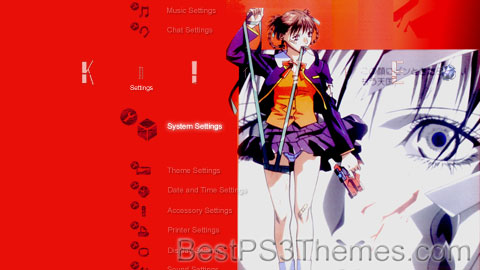
(16 backgrounds, HD only)
P3T Unpacker v0.12
Copyright (c) 2007. Anoop MenonThis program unpacks Playstation 3 Theme files (.p3t) so that you can touch-up an existing theme to your likings or use a certain wallpaper from it (as many themes have multiple). But remember, if you use content from another theme and release it, be sure to give credit!
Download for Windows: p3textractor.zip
Instructions:
Download p3textractor.zip from above. Extract the files to a folder with a program such as WinZip or WinRAR. Now there are multiple ways to extract the theme.
The first way is to simply open the p3t file with p3textractor.exe. If you don’t know how to do this, right click the p3t file and select Open With. Alternatively, open the p3t file and it will ask you to select a program to open with. Click Browse and find p3textractor.exe from where you previously extracted it to. It will open CMD and extract the theme to extracted.[filename]. After that, all you need to do for any future p3t files is open them and it will extract.
The second way is very simple. Just drag the p3t file to p3textractor.exe. It will open CMD and extract the theme to extracted.[filename].
For the third way, first put the p3t file you want to extract into the same folder as p3textractor.exe. Open CMD and browse to the folder with p3extractor.exe. Enter the following:
p3textractor filename.p3t [destination path]Replace filename with the name of the p3t file, and replace [destination path] with the name of the folder you want the files to be extracted to. A destination path is not required. By default it will extract to extracted.filename.Worms Armageddon
Worms Armageddon theme by Woobieizer
Download: WormsArmageddon.p3t
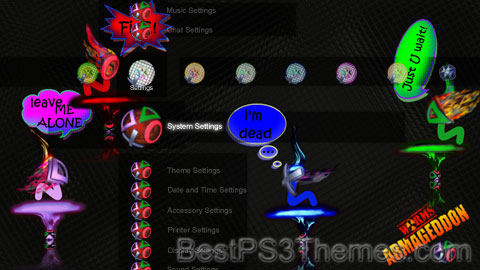
(5 backgrounds, HD only)
Worms Armageddon 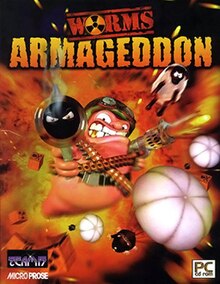
Developer(s) - Team17
- Infogrames Lyon House (N64, GBC)
Publisher(s) PC PS1 and Dreamcast- EU: Team17
- NA: Hasbro Interactive
Hasbro Interactive
N64 and GBC
InfogramesProducer(s) Martyn Brown Programmer(s) Karl Morton Artist(s) Dan Cartwright Composer(s) Bjørn Lynne Series Worms Platform(s) Microsoft Windows
Dreamcast
PlayStation
Game Boy Color
Nintendo 64Release Windows
Dreamcast, PlayStation
Nintendo 64Game Boy ColorGenre(s) Turn-based strategy Mode(s) Single-player, multiplayer Worms Armageddon is a 1999 turn-based strategy video game developed and published by Team17 as part of the Worms series. It was originally released for the Microsoft Windows operating system, and was later ported to the PlayStation, Dreamcast, Nintendo 64, and Game Boy Color. In the game, the player controls a team of up to eight earthworms tasked with defeating an opposing team using a wide range of weapons at their disposal. The game takes place on a destructible and customizable two-dimensional board and is characterized by cartoonish graphics and a unique brand of humour.
The third installment in the series, Worms Armageddon was originally developed as an expansion pack to Worms 2 (1997) and initially titled Wormageddon before it was released as a standalone game. As a result the game is very similar to Worms 2 but has a new single-player mode and adds a number of new content[5][6] as well as being released on a wider variety of platforms. Worms Armageddon was acclaimed by critics, who praised the refined gameplay and stylized graphics, and it has been featured in a number of "greatest games of all time" lists. Worms Armageddon on PC is still updated periodically, most recently in 2020. The game was succeeded by Worms World Party (2001), which added further content without drastic change[7] and which was the last 2D-based Worms game before the series moved to 3D.
Gameplay[edit]
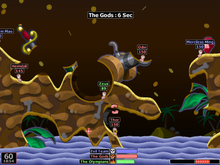
A screenshot of the successor to this game which launched in 2001. Worms World Party, with identical in-game graphics Gameplay is turn-based, with each team moving in sequence, which is determined randomly, across two-dimensional terrain. During a single turn, a team can only move one of their worms (unless an item that allows the team to select their worm is used). Worms can walk and jump, as well as (when the proper items are available) swing by rope, parachute, teleport, and bungee. The objective of a traditional match is to defeat all opposing teams by killing their worms, although in the campaign some missions have other objectives such as collecting a specific crate.[8]
Each worm begins the round with a specific amount of health, which is predefined by the chosen game options or by scripting in campaign levels. When hit with a weapon, the worm will lose health depending upon the power of the weapon and the directness of the hit.[8] A worm can be killed either by exploding after having its health reduced to zero or by being knocked into the water around and below the level.[9]
The game includes a wide variety of weapons, including melee, projectile, and explosive weapons, as well as airstrike-based attacks. Some are based on real-life arms, such as the shotgun, bazooka, and hand grenade; others are rather fanciful and cartoonish, such as the sheep, which serves as a mobile explosive, and the skunk, which releases poisonous gas. In a normal match, all teams begin with the same weapons, based on the chosen weapon set. Some weapons may not become available until a certain number of turns pass. Depending on the game options, additional weapons may randomly fall onto the terrain in airdropped and teleported crates. In addition to normal weapons, during team creation, each team chooses a special weapon which becomes available to them after a certain number of turns. The special weapons are more powerful than regular weapons and often offer special abilities; super weapons will rarely fall in weapon crates. These weapons are often based on cartoonish themes, such as the French Sheep Strike, and usually devastating in power.[8] In homage to the film Monty Python and the Holy Grail, one of the game weapons is a Holy Hand Grenade, with a sound-effect reminiscent of the Hallelujah chorus from Handel's Messiah.[10]
Gameplay modes[edit]
Worms Armageddon includes a series of training missions, a single-player campaign with premade missions, a deathmatch mode in which the player fights increasingly difficult and outnumbered battles against the computer,[9] local multiplayer, and online multiplayer.
Local multiplayer allows the player to select which teams participate in the battle as well as the number of worms and handicaps, which options and weapons are used, and the level to be played on. The matches can use any combination of human and computer teams, provided at least one team is human. Additionally, multiple worm teams can form an alliance for the match by selecting the same team color – they will still operate separately in movement rotation but share weapons and score. If multiple human players are using the same computer, the game functions in a hotseat mode.[8]
Online multiplayer is set up similarly to local multiplayer but allows the players to be at separate computers. Additionally, hotseat can be combined with online play, so multiple human players can use each computer.[8]
Worms Armageddon features a multiplayer Internet service called WormNet. This service allows one player to host a game online and others to join it. The host can choose settings such as the landscape and scheme. In the past, it used to keep a score and ranking system for the players.[10]
Customization[edit]
Worms Armageddon includes a very high level of customizability – in multiplayer games or skirmishes, the player can create custom game modes with preferred gameplay options and weapon sets. Regular options include starting health, whether the worms can move, how long a turn lasts, and sudden death options. Weapons settings include what weapons the teams start with, which weapons will fall in crates and how often, and how powerful individual weapons are. Worms Armageddon offers several levels of customizability outside of direct gameplay options.[8]
The game offers players the ability to create their own custom teams. Each team has its own name and includes eight individually named worms. The player can also change the team's special weapon, grave marker, flag, victory fanfare, and voice set. In addition to numerous defaults available, the game offers the ability to import custom voices.[8]
The game includes a random terrain generator, a basic terrain editor which allows the user to create the shape of the terrain with brushes, and a more complex terrain-import system which allows the user to import custom-made terrains in image format, which the game automatically converts into playable terrains.[8]
Development[edit]
Worms Armageddon was originally intended to be an expansion pack to Worms 2, but it was eventually developed as a standalone game. It was intended to be the last game of the Worms franchise, but Worms creator Andy Davidson felt that it needed more content before being released, leading to the development of Worms World Party.[10] It was also going to be released under the name Wormageddon, but Team17 changed the name to Worms Armageddon because of close similarities to the name of the game Carmageddon.[11] It was released initially for PCs in 1999 in Europe and North America, published by Hasbro Interactive under the MicroProse brand.[12] The game was eventually ported to Dreamcast and PlayStation in December 1999, Game Boy Color in January 2000, and Nintendo 64 in March 2000. The Nintendo 64 version is one of the first Nintendo 64 games to feature a terrain editor and generator.[13] A Macintosh version was being developed by MacSoft, but it has since been cancelled.[citation needed] Worms Armageddon was produced by Martyn Brown and composed by Bjørn Lynne, Karl Morton was the game's lead programmer, and Dan Cartwright was the game's lead artist.[citation needed]
Worms Armageddon was initially released on the Steam platform for a limited time as the preorder bonus for Worms Revolution. The Steam release included all improvements from the previously-released updates. This release was made available on 12 September 2012.[14] Worms Armageddon was released onto the Steam store as a standalone game on 20 March 2013.[15]
Despite its age, Worms Armageddon still receives periodic updates, mainly from two programmers known as Deadcode and CyberShadow, recruited by Team17.[16] These updates address bugs and compatibility issues, and also add new features to the game, such as support for a greater number of worms in a match and support for arbitrarily-sized colour levels. The latest update was on 16 July 2020.[17]
Reception[edit]
ReceptionAggregate score Aggregator Score Dreamcast GBC N64 PC PS GameRankings 81%[18] 75%[19] 84%[20] 88%[21] 83%[22] Review scores Publication Score Dreamcast GBC N64 PC PS CNET Gamecenter 8/10[23] N/A 8/10[24] 7/10[25] 8/10[26] Computer Gaming World N/A N/A N/A 4/5[27] N/A Electronic Gaming Monthly N/A 2/10[28] N/A N/A 9.25/10[29][a] Game Informer N/A N/A N/A 8/10[30] 8/10[31] GameFan N/A N/A 95%[32][b]
(G.H.) 89%[33]4.5/5[34] 90%[35] GameRevolution B[36] N/A N/A A−[37] N/A GameSpot 7.8/10[38] N/A 7.7/10[39] 9.1/10[9] 7.9/10[40] GameSpy 5.5/10[41] N/A N/A N/A N/A IGN 9/10[42] 6/10[43] 8.7/10[44] 8.6/10[45] 7.5/10[46] Next Generation N/A N/A 3/5[47] N/A N/A Nintendo Power N/A N/A 7.4/10[48] N/A N/A Official U.S. PlayStation Magazine N/A N/A N/A N/A 3.5/5[49] PC Accelerator N/A N/A N/A 7/10[50] N/A PC Gamer (UK) N/A N/A N/A 90%[51] N/A Official Dreamcast Magazine UK 8/10[52] N/A N/A N/A N/A The game received favorable reviews on all platforms. The main element across all the versions of the game that the critics considered praiseworthy is the gameplay.
The PC version was critically successful. Whilst writing that veterans of Worms 2 would find the game to be similar, Greg Kasavin of GameSpot praised the game for being easy to play and control and humorous and the game's graphics, physics, and seemingly endless customization as well as the game's WormNet. He also likened the single-player missions to the classic game of Lemmings in that the missions often required the player to precisely utilize a limited supply of weapons and tools to accomplish the objective. Among his only criticisms are that the AI-controlled worms do not utilize their full arsenals and that the player would wish that there were more weapons, more diverse graphics and sound, and more content.[9] Matthew Pierce of PC Gamer UK commended Team17 for addressing the problems of single-player (i.e. the missions and AI) that the original Worms and Worms 2 had always been criticized for.[51] Chris Hudak of The Electric Playground gave it a perfect ten, calling it "a gaming masterpiece."[53] Tom Chick of GamePro said, "For all its similarities to previous cans of Worms, Armageddon is still a classic example of the joy of computer gaming. It's right up there with rare, benevolent gems like RollerCoaster Tycoon and Grim Fandango--games that'll make you smile and even giggle like a schoolgirl. And when it comes right down to it, I'd rather giggle for an hour than spend all day grimly swinging away at orcs or aiming plasma weapons."[54][c] Dan Toose of Hyper gave it 87%, calling it "A fitting end to an excellent series of games [and a] perfect blend of serious strategy and ludicrous humour."[55] Nick Smith of AllGame gave it four stars out of five, calling it "very, very addictive".[56] Cindy Vanous of Computer Games Strategy Plus gave it a similar score of four stars out of five, saying, "In short, it seems that Team 17 [sic] figured out every detail that might have detracted even slightly from Worms 2, then recreated the game without those tiny flaws. The result is eminently playable and often hysterical—in fact, the only thing serious in Armageddon is its strategy."[57]
The Dreamcast version's reception was positive. Johnny Liu of GameRevolution praised the version for its "addictive" gameplay, its loads of personality, and not having to save money to buy multiple controllers for multiplayer, but criticized the version for the lack of Internet support, reduced customizations compared to the PC version, and the lack of a multiple-controller option.[36] On the contrary, Ben Stahl of GameSpot praised the multiple controller ports as well as multiplayer for being fast-paced and turned into a "barrage of havoc", but criticized the single-player for the AI-controlled worms' nearly perfect accuracy and the length of time that it takes for such worms to complete their turns. He also pointed out that the worms' high-pitched voices are "only mildly cute" and can potentially be annoying, but praised the soundtracks for lending in realism to an otherwise unrealistic experience and the background music for helping players stay on task.[38] Joel Durham Jr. of AllGame gave it four stars out of five, saying, "With fabulous gameplay and a stunning amount of options, Worms: Armageddon [sic] is sure to please. The sheer amount of effort that went into this title is commendable in its own right. Every development house could learn something by taking a few pages from Team 17's [sic] book."[58] Cam Shea of Hyper gave it 79%, saying, "if this is the kind of no frills PC port we can expect for the Dreamcast, don't toss out your N64 just yet. You may just need it if you want to play the best version of Worms Armageddon on the block."[59]
Jeff Nash of The Electric Playground gave the PlayStation version nine out of ten almost a year after it was released, calling it "a wonderful breath of fresh air for strategy gaming. With its carefree, happy-go-lucky attitude, it's easy to just fall in love with this title. With a multi-player mode thrown in for good measure, this game has a fantastic one-two punch of great gameplay, and an easy setup for sharing it with others, making it a very fun experience. With a liberal dose of humor present as well, this game is a wonderful romp through the grueling world of worm warfare."[60] However, Mark Kanarick of AllGame gave it two-and-a-half stars out of five, saying, "Although not the best version of Worms, Worms: Armageddon for the PlayStation is a good party game and an occasionally fun single-player game."[61]
The Game Boy Color port slightly favorable reviews. Concluding that the port is an "abridged edition of the overall game", Craig Harris of IGN criticized the version's great lack of the PC version's features (e.g. weapons) and personality and pointed out its "quirky" graphics. The reviewer felt that the game's front end was "extremely thrown together". He concluded that it was still fun to play.[43] Hudak of The Electric Playground gave it seven out of ten, similarly criticized the lack of weapons, and also criticized the lack of soundbites and complete lack of voices and what he perceived to be "microscopic" worms that are tough for the eye to see. He did, however, praise the terrain and physics engine for being well translated from the other versions of the game.[62] Jason White of AllGame gave it three stars out of five, saying that it "has so much going for it in the fun department that the odd controls and sometimes hard to navigate terrain will be easily forgotten. Go out and give this one a try. It's well worth the time."[63]
Many publications gave the Nintendo 64 version favorable reviews while it was still in development months before its U.S. release date.[48] Lou Gubrious of GamePro said that the game's European import "won't dazzle you with graphics or stun you with sound, but it will suck you in with its simple playability. Before you know it, you'll glance up from the TV only to be greeted by the sun, rising like an eye-piercing, flaming disk punishing you for staying up all night again."[64][d] Arthur Adam of Hyper gave the same Nintendo 64 version 89%, saying, "This strategy game has proved to be dynamite on the N64, making it possibly the best multi-player title for the console."[65] Marin Kitts of N64 Magazine gave it 85%, calling it "A welcome conversion of one of the most original four-player games you can buy."[66] However, Michael Wolf of NextGen called the same console version "A good rental if you're planning a gaming party, but for day-to-day gaming, these annelids just don't cut it."[47]
The PlayStation version received a "Gold" sales award from the Entertainment and Leisure Software Publishers Association (ELSPA),[67] indicating sales of at least 200,000 units in the UK.[68]
Awards[edit]
The PlayStation and Dreamcast versions won the award for "Best Strategy Game" at the EGM Game Blast Awards.[69] The PC version was nominated for the same category at the Sixth Annual PC Gamer Awards, which went to Sid Meier's Alpha Centauri. The staff wrote that the game "put up one hell of a fight [for the award] and should not be overlooked by fans of the genre."[70] The console versions were nominated for the same category at GameSpot's Best and Worst of 2000 Awards, which went to Ogre Battle 64.[71]
Legacy[edit]
Worms Armageddon has been placed on several lists of the greatest games of all time. Digital Spy ranked Worms Armageddon at No. 18 on their list of the top 20 Nintendo 64 games of all time.[72] In 2014, GamesRadar+ ranked the game at No. 13 on their list of the top 50 PlayStation games of all time.[73] In 2015, they also ranked it at No. 68 on their list of the top 100 video games of all time.[74] In 2014, Slant Magazine ranked the game at No. 100 on their similar list.[75] TechRadar listed the game as one of their favourite PC games of all time.[76]
Team17 chose to base the source code of the 2016 game Worms W.M.D entirely on that of Worms Armageddon, because fans frequently told them upon questioning that Worms Armageddon was their favourite game in the series.[77] Additionally, the 2009 game Worms 2: Armageddon was named in honor of Worms Armageddon despite not being a direct sequel.
In 2022, the PlayStation versions of Worms Armageddon and Worms World Party were added to the PlayStation Store as part of the first batch of downloadable PlayStation titles; the games run on emulation on the PlayStation 4 and PlayStation 5, but do not feature trophies.
Notes[edit]
- ^ Two critics of Electronic Gaming Monthly gave the game each a score of 9.5/10, and two others gave it each a score of 9/10.
- ^ In GameFan's viewpoint of the Nintendo 64 version's European import, two critics gave it each a score of 95, and another gave it 96.
- ^ GamePro gave the PC version 4/5 for graphics, two 4.5/5 scores for sound and fun factor, and 3/5 for control.
- ^ GamePro gave the Nintendo 64 version 3/5 for graphics, two 3.5/5 scores for sound and control, and 4.5/5 for fun factor in an early review.
References[edit]
- ^ "Game Guide". Computer Trade Weekly. No. 722. United Kingdom. p. 21.
- ^ White, Matt (9 December 1999). "Worms Misses Shipping Date". IGN. Ziff Davis. Archived from the original on 10 April 2023. Retrieved 19 November 2023.
- ^ "INFOGRAMES NORTH AMERICA, INC. ATTACKS NINTENDO®64 WITH WORMS: ARMAGEDDON™". Infogrames. 23 March 2000. Archived from the original on 15 December 2000. Retrieved 8 April 2023.
- ^ IGN staff (19 January 2000). "Worms Squirm to Shelves". IGN. Ziff Davis. Archived from the original on 10 April 2023. Retrieved 19 November 2023.
Dark Cloud
Dark Cloud theme by DNAgent
Download: DarkCloud.p3t
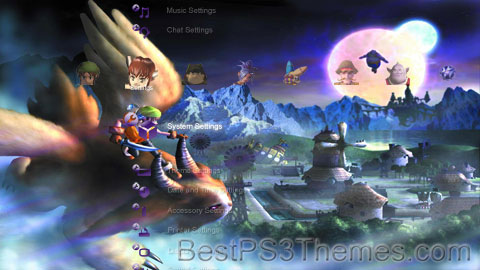
(1 background)
 You can help expand this article with text translated from the corresponding article in French. (October 2021) Click [show] for important translation instructions.
You can help expand this article with text translated from the corresponding article in French. (October 2021) Click [show] for important translation instructions.- View a machine-translated version of the French article.
- Machine translation, like DeepL or Google Translate, is a useful starting point for translations, but translators must revise errors as necessary and confirm that the translation is accurate, rather than simply copy-pasting machine-translated text into the English Wikipedia.
- Do not translate text that appears unreliable or low-quality. If possible, verify the text with references provided in the foreign-language article.
- You must provide copyright attribution in the edit summary accompanying your translation by providing an interlanguage link to the source of your translation. A model attribution edit summary is
Content in this edit is translated from the existing French Wikipedia article at [[:fr:Dark Cloud]]; see its history for attribution. - You may also add the template
{{Translated|fr|Dark Cloud}}to the talk page. - For more guidance, see Wikipedia:Translation.
Dark Cloud 
Developer(s) Level-5 Publisher(s) Sony Computer Entertainment Producer(s) Akihiro Hino Designer(s) Akihiro Hino Programmer(s) Kenji Matsusue Artist(s) Takeshi Majima Writer(s) Akihiro Hino Composer(s) Tomohito Nishiura Platform(s) PlayStation 2 Release Genre(s) Action role-playing Mode(s) Single-player Dark Cloud[3] is an action role-playing video game developed by Level-5 and published by Sony Computer Entertainment for the PlayStation 2. Originally intended as a launch title for the system in March 2000,[4] the game was eventually released in Japan in December 2000, in North America in May 2001, and in Europe in September. A spiritual sequel, Dark Chronicle (called Dark Cloud 2 in North America), was released in Japan in 2002 and worldwide the following year.
Uniquely combining the mechanisms of action role-playing games with elements of city-building games, Dark Cloud tells the story of a group of adventurers who band together to fight against the Dark Genie, who has attacked and destroyed many villages. The main protagonist and player character is Toan, a boy who is given a magical stone called the Atlamillia by Simba, the Fairy King, granting him the power to rebuild the destroyed lands.
Dark Cloud was met with mainly positive reviews by critics, who praised its blend of gameplay types, although some criticized its combat as repetitive. The game was a commercial success. Although it initially sold poorly in Japan, it eventually went on to sell over 1 million units worldwide. The game was later released via emulation for the PlayStation 4 through the PlayStation Network in December 2015.
Gameplay[edit]

In-game screenshot, showing Toan fighting a dragon in one of the game's dungeons. Dark Cloud is an action role-playing game played from a third-person perspective, in which the player moves through procedurally-generated dungeons, battling monsters and collecting items. On random dungeon levels, the player may have the option of entering a separate "back door" area which contains stronger monsters and rarer treasure. Although the majority of combat involves real time hack and slash, the player will occasionally "Duel" an enemy. In this type of battle, the player must correctly press a sequence of buttons, similar to a quick time event.[5] Whilst in dungeons, the player has both a health meter and a thirst meter. The thirst meter gradually decreases over time, and when fully depleted, it causes the health meter to begin to decrease. To prevent the thirst meter from depleting, the player must drink water or step into one of the pools found in many dungeon levels.[6]
A major component of Dark Cloud's gameplay involves special items called "Atla" which are used to rebuild the world outside the dungeons. Atla, which are present in most dungeon levels, are large spherical objects which can be retrieved by Toan only. When Atla are removed from the dungeon, they transform into pieces of the world (trees, houses, villagers, etc.). These pieces must then be reassembled in "Georama mode"; a gameplay mode similar to city-building games, in which the player can arrange the pieces onto the landscape.[7] After villagers have been placed, the player can speak to them to discover their wishes for rebuilding the village, regarding both what they need for their own house to be rebuilt completely, and where they wish their house to be placed. The player's progress in terms of collecting Atla, rebuilding the village and fulfilling the villagers' wishes are recorded as percentages.[8] When all three reach 100%, the village is complete, although it is not necessary for the player to reach 100% in all three to be able to move on to the next set of dungeons and the next village; the player must only acquire 100% in collection and rebuilding to unlock the next village. Completing 100% of the villagers' wishes is not a requirement, although if the player does reach 100%, they are awarded a bonus item/ability.[9]
Unlike most action role-playing games, instead of the characters leveling up, their weapons do.[10] Weapons attain "absorption points" with each kill. Once a certain number of points has been reached, the weapon can be leveled up. However, weapons wear out over time, and it is necessary to repair them in order to prevent them from breaking. With the exception of each characters' starting weapon, a broken weapon is immediately removed from the player's inventory and cannot be retrieved or repaired. To upgrade a weapon, the player can attach stat-increasing items (attack power, speed, ability to kill different types of monsters, elemental attributes, etc.), but a single weapon can only carry a limited number of attachments. These attachments are absorbed into the weapon when it is leveled up, freeing up space for more attachments.[11] When a weapon reaches level five, it can be transformed into a "SynthSphere", which carries 60% of the weapon's power and attributes. This sphere can then be attached to another weapon, and absorbed into it when it levels up, just like a regular attachment.[12] The characters themselves can only grow stronger with the consumption of particular items, which can increase their health points, water meter and defense.
Dark Cloud features six main characters; three melee fighters and three ranged fighters, with each using a different weapon. Each character also has a unique ability that allows them to move through the dungeons; for example, Xiao can jump across chasms that other characters can not.[13]
Plot[edit]
A long, long time ago, when the two moons were shining, there were two continents in the world, living separately but peacefully. In the East there was an advanced civilization; the development of technology had brought prosperity and wealth there. In the West the people lived in harmony with the natural world, co-existing peacefully with the spirits and animals around them. Then came the time of darkness. A great evil was unleashed, and a Dark Cloud overshadowed the Western continent. Whole villages were destroyed. Entire families mysteriously vanished. And a strange and magical adventure began.[14]
The game begins as Colonel Flag Gilgister of the Lagoon Empire Army of the East attempts to awaken the Dark Genie, a legendary evil creature, whom Flag wishes to use to control the world.[15] Upon summoning the Genie, Flag orders him to attack the West. However, prior to the attack, Simba, the Fairy King, casts a protective spell around the land, sealing the buildings, objects and people inside magical orbs called "Atla".[16] Due to the power of the Genie's attack, the orbs are scattered.
Meanwhile, Toan, whose home village of Norune has been destroyed, although he survived the attack unhurt, encounters the Fairy King, who gives him a magical stone called the "Atlamillia",[17] and tasks him with finding the scattered Atla and transforming back into its original form. Toan sets about restoring Norune, and in a nearby cave meets a man named Seda, who defeats him in a duel when Toan attempts to protect a nearby cat.[18] As a reward for his kindness, Seda gives Toan a "changing potion",[19] which he uses to transform the cat into a "catgirl" named Xiao, who joins him on his quest.[20] Toan and Xiao soon find Dran, guardian of Norune, who is possessed by the Genie, and who attacks them. They defeat him, releasing him from the Genie's control,[21] and he tells them of the legend of the "Black Demon" that nearly destroyed the world, until it was defeated and imprisoned by the Moon People.[22] He suggests they seek out the Moon People, telling them to visit a sentient tree called Treant in nearby Matataki Village.[23]
In Matataki, Toan and Xiao are joined by a local boy named Goro, and the trio set about rebuilding the village. Treant tells them how to get to the Moon People, and they make their way to Brownboo, a village unaffected by the Genie's attack, and home of the Moon People. Toan asks them if they can seal the Genie again, but they explain they have forgotten how to use magic. The Moon People who live on the Moon can still use magic, and so they decide to head there, using the Moon Ship, which can be activated by the Moon Orb,[24] but they discover the Orb is missing, having been accidentally traded with a batch of Moon Fruits.
The party travel to the town of Queens,[25] which has also been attacked by the Genie. While searching a shipwreck for the Orb, Toan finds a lamp that releases a friendly genie, Ruby, who joins them.[26] They eventually find the Moon Orb,[27] but are unable to summon the Moon Ship.[28] As such, they head to the Sun and Moon Temple in Muska Lacka, where the Moon Ship is located. There, they meet a sand warrior named Ungaga, who joins them and helps them activate the Moon Ship. They travel to the Moon city of Yellow Drops, and meet Osmond, a Moon Person who asks for help in collecting the scattered pieces of a giant battle robot called the Sun Giant, which the Moon People believe can destroy the Genie outright. When the Sun Giant is complete, the party and a crew of Moon People travel to Dark Heaven Castle, where the Genie now resides.[29]
They attack and defeat the Genie, only to learn that they were actually fighting a transformed mouse that had absorbed a fraction of the real Genie's powers.[30] The true Dark Genie has possessed Flag, and destroys the Sun Giant.[31] The Genie's power proves too great for Flag's body, and he dies, leaving the Genie without a host. Toan and the crew are rescued by Dran, and the party pursue the Genie into the castle, where they encounter Seda, who tells them he is responsible for the existence of the Genie.[32] He reveals he was King of the East, and was losing a war to the West. He was approached by a dark wizard, who offered him the power to win the war. However, after winning, the dark power remained in his body, and after a tragic loss, it was released in the form of the Genie. Seda learned the only thing strong enough to defeat the Genie was Atlamillia. No Atlamillia would exist for another 400 years, so he opened a portal to the future. He tells Toan the only way to stop the Genie is to prevent his birth in the past, and opens the Gallery of Time to allow the party to travel back to the past.[33] As the Genie attempts to repossess Seda, Seda kills himself.[34]
In the Gallery of Time, the party learn the tragic loss suffered by Seda was the death of Sophia, his fiancée, at the hands of an assassin seeking to kill him.[35] The party are unable to prevent Sophia's death and the subsequent birth of the Genie, but they face the Genie's original form, and are able to defeat it. Toan then expends the Atlamilla's powers to revive Sophia, reuniting her with the Seda of the past, and preventing the birth of the Genie.[36] Upon doing so, the party is returned to its own time, and the Fairy King informs them the Genie is gone, for now.[37]
Development[edit]

Georama mode, which allows players to rebuild towns and villages. Dark Cloud was the first game from developer Level-5, led by president and CEO Akihiro Hino, who also wrote, produced and designed the game. Development began immediately when the company was founded in October 1998 with a projected development time of two years.[2] When the PlayStation 2 was announced in March 1999, Sony president and CEO Ken Kutaragi used an early demo of Dark Cloud to show the capabilities of the platform. The demo showed a magic carpet flying through a valley, and some waterfall effects.[38]
In September 1999, Sony showed an early playable version of the game at the Tokyo Game Show.[39] This version of the game was also shown at a US demonstration[40] at Las Vegas for COMDEX in November as well in a presentation done by Phil Harrison of Sony. This version featured a character who must return a floating piece of land back to where it originally came from, but this original location has been usurped by an evil kingdom. Georama mode was a major component of the demo, with both IGN and GameSpot comparing it to Legend of Mana's "Land Make" system.[41][42] At E3 in May 2000, a 30% complete playable demo was shown. IGN's Dave Zdyrko praised the graphics, especially the water and lighting effects. The demo was mainly centered in Norune Village, and although it did feature one accessible dungeon, the camerawork for the dungeon portions of the game had yet to be finalized.[43]
The game was announced in 2000.[44][45] In December, GameSpot previewed the game, calling Toan "Link with an Ali Baba twist". They compared the combat system to The Legend of Zelda: Ocarina of Time and the duels to Shenmue, and then the graphics, water effects and transitions from day to night.[46] IGN wrote that "without fully playing through the game, it's very hard to determine whether or not this title will prove to be revolutionary or just a gimmicky way to show off the real-time rendering powers of the new console".[7]
The English language release of Dark Cloud in May 2001 had additional gameplay features, including new weapons and monsters, improved AI, extra duels and an extra dungeon after completing the game, the Demon Shaft; this location does not appear in the Japanese version.[47]
Music[edit]
The game's music was composed, arranged, and produced by Tomohito Nishiura. A full forty-six track soundtrack was released by Sony Music Entertainment Visual Works in Japan on January 11, 2001.[48]
PlayStation 4 port[edit]
An emulated version for the PlayStation 4, available through PlayStation Store, was released in December 2015, with features including 1080p graphical resolution, trophy support, Remote Play, Share Play compatibility and second screen support for PlayStation Vita and PlayStation App.[49][50][51][52][53]
Reception[edit]
ReceptionAggregate score Aggregator Score Metacritic 80/100[54] Review scores Publication Score Destructoid (PS4) 8.5/10[55] Edge 7/10[56] Electronic Gaming Monthly 8.33/10[57][a] EP Daily 8/10[58] Famitsu 28/40[59][60] Game Informer 9/10[61] GameRevolution B[62] GameSpot 8.1/10[13] GameSpy 79%[63] IGN 8.4/10[64] Next Generation 



 [65]
[65]Official U.S. PlayStation Magazine 



 [66]
[66]RPGFan (S.H.) 83%[67]
(M.B.) 70%[68]X-Play 



 [69]
[69]The Cincinnati Enquirer 



 [70]
[70]Dark Cloud received "generally favorable reviews" according to the review aggregation website Metacritic.[54] However, Blake Fischer of NextGen said of the game in his negative review: "Not quite Zelda. Not quite ActRaiser. Not quite fun."[65] In Japan, Famitsu gave it a score of one eight, two sevens, and one six for a total of 28 out of 40.[59]
Gameplay was compared by several critics to The Legend of Zelda: Ocarina of Time,[64] while the weapon system was likened to Vagrant Story.[13][62] GameSpot's Shane Satterfield and IGN's Dave Zdyrko both felt the Georama mode borrowed elements from ActRaiser.[13][64] GameSpot, IGN and Game Informer's Andrew Reiner all praised the game for blending different types of gameplay together successfully. Satterfield argued "no game has blended all these compelling and unrelated ideas together into one highly addictive and surprisingly cohesive experience until now".[13] Zdyrko called the game "a highly-enjoyable and insanely addictive role-playing experience that wouldn't have been able to stand alone with just its story, just its battle system, or any single one of its gameplay elements. The game works because each element aids in the enjoyment of the other parts."[64] Reiner wrote: "The overall design may not be the best, yet you'll be completely engrossed with Dark Cloud's play. Completists will want to obtain every item and weapon. Action fans will drool over the combat. Sim junkies will admire the town building. A rarity for RPGs, Dark Cloud truly does have a little something for everyone."[61]
The battle system received mixed reviews. AllGame's J.C. Barnes found the game's use of elemental attacks awkward: "Rooms can have anywhere from three to five monsters at a time, each having different elemental attributes. This means that gamers will most likely have to kill a monster that's weak against a specific attribute, open the weapon menu, select another attribute for the other monster, close the menu and repeat until all the monsters are defeated." He also found the dungeon crawling aspect somewhat repetitive.[71] Uncle Dust of GamePro called the fighting "monotonous", arguing that the game "doesn't do the basics right."[72][b]
Reviews of the plot were also mixed. Zydrko thought the story was "good enough to keep you wanting to find out more."[64] Barnes was less impressed, writing "While there are hints of talent behind some of the story elements, there needs to be more emphasis on creative, original storytelling if Dark Cloud is going to become a franchise capable of going head to head with The Legend of Zelda."[71]
Assassin’s Creed 1 & 2
Assassin’s Creed 1 & 2 theme by harcher81
Download: AssassinsCreed1and2.p3t

(8 backgrounds)
P3T Unpacker v0.12
Copyright (c) 2007. Anoop MenonThis program unpacks Playstation 3 Theme files (.p3t) so that you can touch-up an existing theme to your likings or use a certain wallpaper from it (as many themes have multiple). But remember, if you use content from another theme and release it, be sure to give credit!
Download for Windows: p3textractor.zip
Instructions:
Download p3textractor.zip from above. Extract the files to a folder with a program such as WinZip or WinRAR. Now there are multiple ways to extract the theme.
The first way is to simply open the p3t file with p3textractor.exe. If you don’t know how to do this, right click the p3t file and select Open With. Alternatively, open the p3t file and it will ask you to select a program to open with. Click Browse and find p3textractor.exe from where you previously extracted it to. It will open CMD and extract the theme to extracted.[filename]. After that, all you need to do for any future p3t files is open them and it will extract.
The second way is very simple. Just drag the p3t file to p3textractor.exe. It will open CMD and extract the theme to extracted.[filename].
For the third way, first put the p3t file you want to extract into the same folder as p3textractor.exe. Open CMD and browse to the folder with p3extractor.exe. Enter the following:
p3textractor filename.p3t [destination path]Replace filename with the name of the p3t file, and replace [destination path] with the name of the folder you want the files to be extracted to. A destination path is not required. By default it will extract to extracted.filename.Resident 5 Chris Redfield
Resident 5 Chris Redfield theme by Daytripper
Download: ResidentEvil5ChrisRedfield.p3t
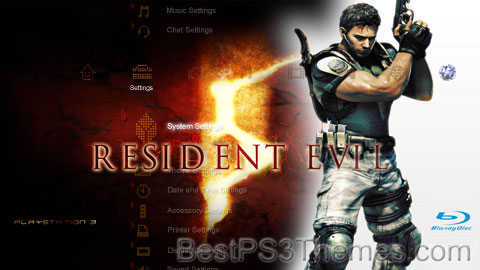
(1 background)
P3T Unpacker v0.12
Copyright (c) 2007. Anoop MenonThis program unpacks Playstation 3 Theme files (.p3t) so that you can touch-up an existing theme to your likings or use a certain wallpaper from it (as many themes have multiple). But remember, if you use content from another theme and release it, be sure to give credit!
Download for Windows: p3textractor.zip
Instructions:
Download p3textractor.zip from above. Extract the files to a folder with a program such as WinZip or WinRAR. Now there are multiple ways to extract the theme.
The first way is to simply open the p3t file with p3textractor.exe. If you don’t know how to do this, right click the p3t file and select Open With. Alternatively, open the p3t file and it will ask you to select a program to open with. Click Browse and find p3textractor.exe from where you previously extracted it to. It will open CMD and extract the theme to extracted.[filename]. After that, all you need to do for any future p3t files is open them and it will extract.
The second way is very simple. Just drag the p3t file to p3textractor.exe. It will open CMD and extract the theme to extracted.[filename].
For the third way, first put the p3t file you want to extract into the same folder as p3textractor.exe. Open CMD and browse to the folder with p3extractor.exe. Enter the following:
p3textractor filename.p3t [destination path]Replace filename with the name of the p3t file, and replace [destination path] with the name of the folder you want the files to be extracted to. A destination path is not required. By default it will extract to extracted.filename.Passat CC
Passat CC theme by Jackt3c
Download: PassatCC.p3t
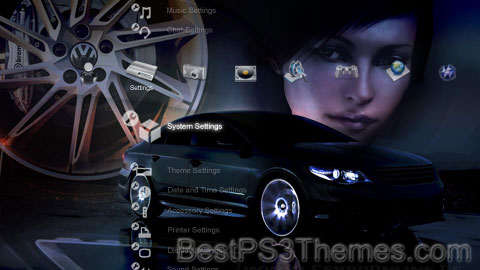
(1 background, different for HD and SD)
Redirect to:
Utah Jazz 2009 Playoffs
Utah Jazz 2009 Playoffs theme by superespnman
Download: UtahJazz2009Playoffs.p3t
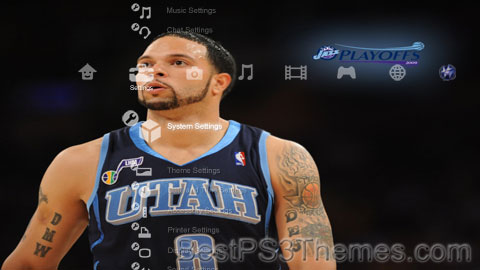
(8 backgrounds)P3T Unpacker v0.12
Copyright (c) 2007. Anoop MenonThis program unpacks Playstation 3 Theme files (.p3t) so that you can touch-up an existing theme to your likings or use a certain wallpaper from it (as many themes have multiple). But remember, if you use content from another theme and release it, be sure to give credit!
Download for Windows: p3textractor.zip
Instructions:
Download p3textractor.zip from above. Extract the files to a folder with a program such as WinZip or WinRAR. Now there are multiple ways to extract the theme.
The first way is to simply open the p3t file with p3textractor.exe. If you don’t know how to do this, right click the p3t file and select Open With. Alternatively, open the p3t file and it will ask you to select a program to open with. Click Browse and find p3textractor.exe from where you previously extracted it to. It will open CMD and extract the theme to extracted.[filename]. After that, all you need to do for any future p3t files is open them and it will extract.
The second way is very simple. Just drag the p3t file to p3textractor.exe. It will open CMD and extract the theme to extracted.[filename].
For the third way, first put the p3t file you want to extract into the same folder as p3textractor.exe. Open CMD and browse to the folder with p3extractor.exe. Enter the following:
p3textractor filename.p3t [destination path]Replace filename with the name of the p3t file, and replace [destination path] with the name of the folder you want the files to be extracted to. A destination path is not required. By default it will extract to extracted.filename.Fabula Nova Crystallis v2.5
Fabula Nova Crystallis v2.5 theme by Clent
Download: FabulaNovaCrystallisv25.p3t
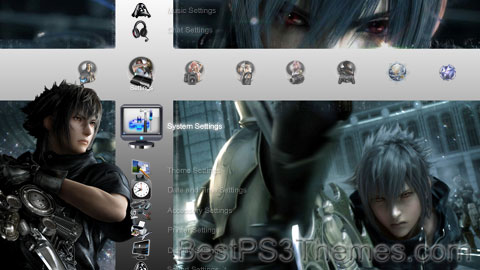
(2 backgrounds)
P3T Unpacker v0.12
Copyright (c) 2007. Anoop MenonThis program unpacks Playstation 3 Theme files (.p3t) so that you can touch-up an existing theme to your likings or use a certain wallpaper from it (as many themes have multiple). But remember, if you use content from another theme and release it, be sure to give credit!
Download for Windows: p3textractor.zip
Instructions:
Download p3textractor.zip from above. Extract the files to a folder with a program such as WinZip or WinRAR. Now there are multiple ways to extract the theme.
The first way is to simply open the p3t file with p3textractor.exe. If you don’t know how to do this, right click the p3t file and select Open With. Alternatively, open the p3t file and it will ask you to select a program to open with. Click Browse and find p3textractor.exe from where you previously extracted it to. It will open CMD and extract the theme to extracted.[filename]. After that, all you need to do for any future p3t files is open them and it will extract.
The second way is very simple. Just drag the p3t file to p3textractor.exe. It will open CMD and extract the theme to extracted.[filename].
For the third way, first put the p3t file you want to extract into the same folder as p3textractor.exe. Open CMD and browse to the folder with p3extractor.exe. Enter the following:
p3textractor filename.p3t [destination path]Replace filename with the name of the p3t file, and replace [destination path] with the name of the folder you want the files to be extracted to. A destination path is not required. By default it will extract to extracted.filename.Lost #6
Lost theme by lost
Download: Lost_6.p3t
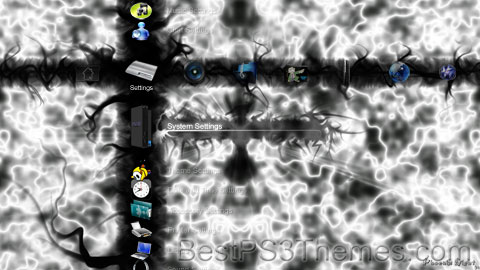
(1 background)
Lost or LOST may refer to getting lost, or to:
Geography[edit]
- Lost, Aberdeenshire, a hamlet in Scotland
- Lake Okeechobee Scenic Trail, or LOST, a hiking and cycling trail in Florida, US
Arts, entertainment, and media[edit]
Films[edit]
- Lost (1950 film), a Mexican film directed by Fernando A. Rivero
- Lost (1956 film), a British thriller starring David Farrar
- Lost (1983 film), an American film directed by Al Adamson
- Lost! (film), a 1986 Canadian film directed by Peter Rowe
- Lost (2004 film), an American thriller starring Dean Cain
- The Lost (2006 film), an American psychological horror starring Marc Senter
- Lost (2023 film), an Indian Hindi-language thriller film
Television[edit]
- Lost (2001 TV series), a short-lived American and UK reality television series
- Lost (2004 TV series), an American drama series about people who become stranded on a mysterious island
- Lost (South Korean TV series), a 2021 South Korean television series
- "Lost" (Stargate Universe), an episode of science fiction television series Stargate Universe
- "Lost", an episode of Unleashed!
- "Lost", an episode of the Canadian documentary TV series Mayday
- "Lost", an episode of Disney's So Weird
- "The Lost" (Class), an episode of the first series of the Doctor Who spin-off series Class
Literature[edit]
- Lost (Maguire novel), a 2001 horror/mystery novel by Gregory Maguire
- Lost (Robotham novel), a 2005 Michael Robotham novel
- Lost, a novel by Alice Lichtenstein
- Lost: A Memoir, a 2009 memoir by Canadian author Cathy Ostlere
- The Lost: A Search for Six of Six Million, a 2006 memoir by Daniel Mendelsohn
- The Lost (Durst novel), a 2014 fantasy novel by American author Sarah Beth Durst
Music[edit]
Groups and labels[edit]
- Lost (band), an Italian pop rock band
- The Lost (band), a Boston garage rock band
Albums[edit]
- Lost (8Ball album), 1998
- Lost (Carpark North album), 2010
- Lost (Cool Calm Pete album), 2005
- Lost (Died Pretty album), 1988
- Lost (Elegy album), 1995
- Lost (RTZ album), 1998
Songs[edit]
- "Lost" (The Badloves song), 1993
- "LosT" (Bring Me The Horizon song). 2023
- "Lost" (Cold Chisel song), 2015
- "Lost" (Faith Hill song), 2007
- "Lost" (Frank Ocean song), 2012
- "Lost" (Gorilla Zoe song), 2008
- "Lost" (Hunter Brothers song), 2018
- "Lost" (Lasgo song), 2009
- "Lost" (Linkin Park song), 2023
- "Lost" (Menudo song), 2008
- "Lost" (Maroon 5 song), 2021
- "Lost" (Michael Bublé song), 2007
- "Lost" (NF song), 2021
- "Lost" (Roger Sanchez song), 2006
- "Lost" (Skin song), 2003
- "Lost" (Vassy and Afrojack song), 2017
- "Lost!", by Coldplay
- "Lost", by Amanda Palmer & the Grand Theft Orchestra from Theatre Is Evil
- "Lost", by Annie Lennox from Songs of Mass Destruction, 2007
- "Lost", by Anouk from Hotel New York
- "Lost", by Avenged Sevenfold from Avenged Sevenfold
- "Lost", by the Box Tops from Cry Like a Baby
- "Lost", by BTS from Wings, 2016
- "Lost", by Chance the Rapper featuring No name from Acid Rap
- "Lost", by The Church from Starfish
- "Lost", by Clockwork Radio from State of Mind EP
- "Lost", by the Cure from The Cure, 2004
- "Lost", by Dead by April from Incomparable
- "Lost", by Delain from April Rain
- "Lost", by Dusty Springfield from A Brand New Me
- "Lost", by Edge of Sanity from The Spectral Sorrows
- "Lost", by Katy Perry from One of the Boys, 2008
- "Lost", by Killswitch Engage from Killswitch Engage (2009 album), 2009
- "Lost", by Korn from Life Is Peachy
- "Lost", by Kreator from Cause for Conflict
- "Lost", by Kris Allen from Horizons, 2014
- "Lost", by the Meat Puppets from Meat Puppets II
- "Lost", by Nevermore from The Politics of Ecstasy
- "Lost", by Neurosis from Enemy of the Sun
- "Lost", by Nik Kershaw from You've Got to Laugh
- "Lost", by Orbital from Blue Album
- "Lost", a 2019 song by Onlychild
- "Lost", by Red from End of Silence
- "Lost", by Robbie Williams from XXV, 2022
- "Lost", by Stabbing Westward from Ungod
- "Lost", by Tristania from World of Glass
- "Lost", by Uriah Heep from Into the Wild
- "Lost", by Van der Graaf Generator from H to He, Who Am the Only One
- "Lost", by Will Haven from Voir Dire
- "Lost", by Within Temptation from The Unforgiving
- "Lost", a 2014 song by Irish musician The Eden Project from the EP Entrance
Video games[edit]
- Lost: Via Domus, a 2008 video game by Ubisoft based on the Lost TV series
- The Lost (video game), a 2002 vaporware game by Irrational Games
Other uses[edit]
- Local option sales tax
- Mustard gas, originally known as Lost
- Lost Generation, the social generational cohort that was in early adulthood during World War I
- Abbreviation of lost work, any work which is known to have been created but has not survived to the present day
See also[edit]
